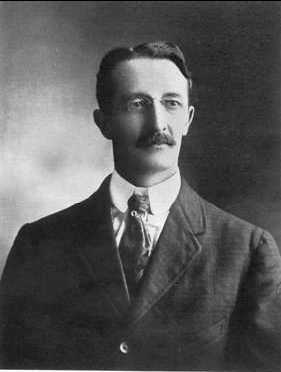History of chiropractic
History of chiropractic
The history of chiropractic traces its origins to the late 19th century. Chiropractic is a form of alternative medicine that emphasizes diagnosis, treatment, and prevention of mechanical disorders of the musculoskeletal system, especially the spine. The practice is based on the belief that these disorders affect general health via the nervous system.
Origins[edit | edit source]
Chiropractic was founded by Daniel David Palmer in Davenport, Iowa, in 1895. Palmer, a self-taught healer, performed the first chiropractic adjustment on a janitor named Harvey Lillard, who claimed to have lost his hearing many years earlier. According to Palmer, Lillard's hearing was restored after the adjustment. Palmer believed that misalignments of the spine, which he termed "subluxations," were the root cause of many diseases.
Development and Spread[edit | edit source]
Palmer established the Palmer School of Chiropractic in 1897, which is now known as Palmer College of Chiropractic. His son, Bartlett Joshua Palmer, took over the school in 1906 and played a significant role in the development and spread of chiropractic. B.J. Palmer introduced the use of X-rays in chiropractic diagnosis and treatment, and he was instrumental in promoting chiropractic through extensive marketing and public relations efforts.
Legal and Professional Recognition[edit | edit source]
Chiropractic faced significant opposition from the medical community in its early years. Many chiropractors were prosecuted for practicing medicine without a license. However, the profession gradually gained legal recognition. The first state to license chiropractors was Kansas in 1913. By the mid-20th century, chiropractic was legally recognized in all 50 states of the United States.
Education and Research[edit | edit source]
Chiropractic education has evolved significantly since its inception. Chiropractic colleges now offer a Doctor of Chiropractic (D.C.) degree, which typically requires four years of study. The curriculum includes courses in anatomy, physiology, biomechanics, and clinical practice. Research in chiropractic has also grown, with studies focusing on the efficacy and safety of chiropractic treatments.
Contemporary Practice[edit | edit source]
Today, chiropractic is practiced worldwide and is considered a mainstream form of complementary and alternative medicine. Chiropractors often work in conjunction with other healthcare professionals to provide comprehensive care. The scope of chiropractic practice varies by country, with some chiropractors focusing solely on spinal adjustments and others offering a broader range of treatments.
Criticism and Controversy[edit | edit source]
Despite its widespread acceptance, chiropractic remains controversial. Critics argue that the evidence supporting chiropractic is limited and that some of its practices lack scientific validity. The concept of subluxations, in particular, is a point of contention. However, many patients report positive outcomes from chiropractic care, particularly for conditions such as back pain and neck pain.
See also[edit | edit source]
References[edit | edit source]
External links[edit | edit source]
Translate: - East Asian
中文,
日本,
한국어,
South Asian
हिन्दी,
தமிழ்,
తెలుగు,
Urdu,
ಕನ್ನಡ,
Southeast Asian
Indonesian,
Vietnamese,
Thai,
မြန်မာဘာသာ,
বাংলা
European
español,
Deutsch,
français,
Greek,
português do Brasil,
polski,
română,
русский,
Nederlands,
norsk,
svenska,
suomi,
Italian
Middle Eastern & African
عربى,
Turkish,
Persian,
Hebrew,
Afrikaans,
isiZulu,
Kiswahili,
Other
Bulgarian,
Hungarian,
Czech,
Swedish,
മലയാളം,
मराठी,
ਪੰਜਾਬੀ,
ગુજરાતી,
Portuguese,
Ukrainian
Navigation: Wellness - Encyclopedia - Health topics - Disease Index - Drugs - World Directory - Gray's Anatomy - Keto diet - Recipes
Search WikiMD
Ad.Tired of being Overweight? Try W8MD's physician weight loss program.
Semaglutide (Ozempic / Wegovy and Tirzepatide (Mounjaro / Zepbound) available.
Advertise on WikiMD
WikiMD is not a substitute for professional medical advice. See full disclaimer.
Credits:Most images are courtesy of Wikimedia commons, and templates Wikipedia, licensed under CC BY SA or similar.Contributors: Prab R. Tumpati, MD





